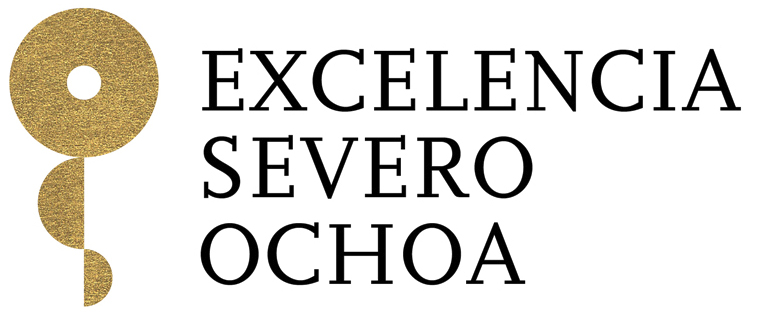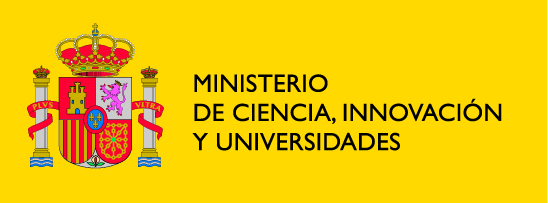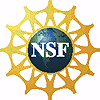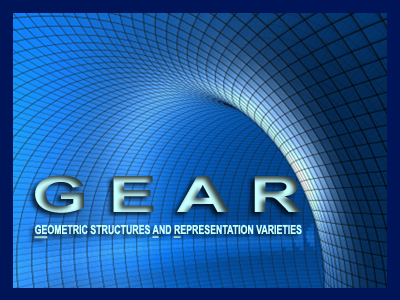Schedule
| Monday 12 Nov | Tuesday 13 Nov | Wednesday 14 Nov | Thursday 15 Nov | Friday 16 Nov | ||
|---|---|---|---|---|---|---|
| U. Bruzzo | 10:00-11:00 | |||||
| 10:30-11:30 | N. Hitchin | C. Simpson | O. Biquard | N. Hitchin | ||
| Coffee Break | 11:00-11:20 | |||||
| J. P. Whang | 11:20-12:20 | |||||
| 11:30-12:00 | Coffee break | Coffee break | Coffee break | Coffee break | ||
| 12:00-13:00 | A. Oliveira | B. Collier | J. Swoboda | L. Branco | ||
| S. Gukov | 12:30-13:30 | |||||
| 13:00-15:00 | Lunch | Lunch | Lunch | Lunch | ||
| 15:00-16:00 | A. Thomas | Qiongling Li | E. Franco | |||
| 16:00-16:30 | Coffee break | Coffee break | Coffee break | |||
| 16:30-17:30 | G. Kydonakis | N. Hitchin | A. Peón-Nieto | |||
Programme
Click here to download the scientific programme.
Titles and abstracts
Mini-course:
Nigel Hitchin (Oxford): Higgs bundles and mirror symmetry
-
Lecture 1. Hodge theory, abelian and non-abelian
-
SYZ mirror symmetry and semiflat metric for a Calabi-Yau
The integrable system and semiflat metric for Higgs bundles
-
Lecture 2. Mirror symmetry and Langlands duality
-
Duals of abelian varieties, examples
BAA-branes and BBB-branes
Invariant Lagrangian submanifolds
Mirror symmetry in rank 2
-
Lecture 3. Hyperholomorphic bundles
-
The Dirac bundle, the universal bundle
The Hecke transform
Lagrangians and hyperholomorphic bundles
Workshop abstracts:
- Olivier Biquard (ÉNS, Paris): From HyperKähler metrics on Higgs moduli spaces to a Ricci flat Kä̈hler metrics on complexified symmetric spaces
-
Using Higgs moduli spaces in the 90's I had constructed hyperKähler metrics on cotangent spaces of all generalized flag manifolds of complex semisimple groups. Studying the asymptotics of this metric leads to interesting generalizations on complexified symmetric spaces. Joint work with Thibaut Delcroix.
- Lucas Branco (MPIM Bonn): Higgs bundles and mirror symmetry — examples via isogenies
-
According to mirror symmetry, complex Lagrangians in the Higgs bundle moduli space for a complex group are related to hyperkähler subvarieties of the
Higgs bundle moduli space for the Langlands dual group. After discussing
some general constructions, we focus on this duality for complex Lagrangians
arising from two real forms of SO(4,C) and explain how our results relate to
the conjectural picture.
- Ugo Bruzzo (SISSA, Trieste): A conjecture about Higgs bundles
-
My talk will be about a class of Higgs bundles that we call “curve semistable”; a
Higgs bundle E on a smooth projective variety X is said to be curve semistable
if for every morphism f : C → X, where C is a projective curve, the pullback
f ∗ E is semistable. For ordinary bundles it is known that a bundle is curve
semistable if and only if it is semistable with respect to some polarization and
its discriminant vanishes. The analogous statement for Higgs bundles is still
conjectural. We shall discuss some partial progress towards the proof of this
conjecture.
- Brian Collier (Maryland): Generalized opers, conformal limits and maximal variations of Hodge structure
-
For a complex semisimple Lie group G, the space of opers is an affine holomorphic Lagrangian submanifold of the moduli space of flat G connections which
is biholomorphic to the base of the Hitchin fibration. These objects are related
to the interaction of certain holomorphic connections with structure group reductions to a Borel subgroup. In this talk we will introduce a notion of opers
for other parabolic subgroups and parameterize these objects. Furthermore,
we will see that the so called conformal lift identifies these generalized opers
with the stable manifold of certain C ∗ -fixed points in the Higgs bundle moduli
space.
- Emilio Franco (Porto): Branes on the singular locus of the Hitchin system via Borel and other parabolic subgroups
-
The moduli space of Higgs bundles has an extremely rich geometry, it is a
hyperKaehler variety and fibrates over a vector space becoming an integrable
system named the Hitchin system. Its importance in theoretical physics comes
from the fact that a dimensional reduction of an N = 4 Super Yang–Mills
gauge theory can be rewritten as a 2-dimensional sigma-model with the Hitchin
system as a target. In this context, Kapustin and Witten reinterpreted the
classical limit of S-duality of the original SYM gauge theory as mirror symmetry
in the target (the Hitchin system). They also introduced the appropriate notion
of branes in the Hitchin system respecting the hyperKaehler structure. In this
talk I will study the behaviour under mirror symmetry of a family of branes
living on the singular locus of the Hitchin system. I will also describe their
geometry and the role of the Borel subgroup. The picture can be generalized
to other parabolic subgroups. This is joint work with Ana Peón-Nieto.
- Sergei Gukov (Caltech): Modular tensor categories from wild Higgs bundles
- Georgios Kydonakis (Strasbourg): Model Higgs bundles in exceptional components of character varieties
-
Gluing ASD connections over a complex connected sum of manifolds is a wellknown technique in Yang–Mills theory and has been effectively modified for
several types of equations in gauge theory. An adaptation of this technique in
the context of Higgs bundles involves the utilization of the linearization of a
relevant elliptic operator coming from the Hitchin equations. The construction
can be used to build model Higgs bundles in exceptional components of character varieties R(G) for which good models have not been known before, as
for the case G = Sp(4, ℝ) and G = SO(n, n + 1).
- Qiongling Li (Nankai): Dominations in moduli space of Higgs bundles
-
In this talk, we discuss some progress towards two “domination” conjectures
made on the moduli space of Higgs bundles. First, we show for a Hitchin representation in PSL(n,ℝ), every equivariant minimal immersion from a hyperbolic
plane into the corresponding symmetric space is distance-increasing. Secondly,
consider Hitchin fibers at (q2 , 0, ..., 0), that is, the fibers containing Fuchsian
locus. We show a comparison theorem on the length spectrum between surface
group representations in such fibers with Fuchsian ones, as a generalization of
the SL(2,ℂ) case shown by Deroin and Tholozan.
- André Oliveira (Porto & UTAD): Generalized Cayley correspondence and higher Teichmüller components for SO(p, q)-Higgs bundles
-
For many classes of Lie groups G, natural topological invariants completely
label connected components of the moduli spaces G-Higgs bundles in a curve.
Hitchin components in the split real form case, and maximal components in the
Hermitian (tube type) case, were the only previously know cases where these
natural invariants do not fully distinguish connected components. In this talk
we will explain the existence of new such higher Teichmüller components in the
moduli spaces of SO(p, q)-Higgs bundles, via a generalized Cayley correspondence. In general, these groups lie outside the above mentioned classes of real
forms, but fit in a conjectural natural framework which seems to be associated
to the existence of such components.
- Ana Peón-Nieto (Genève): Branes on the Hitchin system from torsion line bundles
-
In this talk I will explain how mirror symmetry operates on some natural
hyperholomorphic branes on the Hitchin system, given by fixed points by tensorisation with a torsion line bundle. Generically, they are supported over the
locus of integral spectral curves. Many aspects of their geometry are however
more easily understood through branes supported on the most singular locus
of a related Hitchin system. I will refer to this interplay during the exposition.
This is joint work with E. Franco, P. Gothen and A. Oliveira.
- Carlos Simpson (Nice): Higgs bundles in the geometric Langlands correspondence for genus 2 curves
-
This is joint work with Ron Donagi and Tony Pantev. They propose to look
at the local systems predicted by geometric Langlands through the lens of the
nonabelian Hodge correspondence. The Higgs bundle over Bun G would have
as spectral variety the appropriate fiber of the Hitchin fibration, sitting inside
T ∗ Bun G . Here, we look at the case of rank 2 bundles on a compact genus 2
curve. The moduli spaces are P 3 and an intersection of two quadrics in P 5 . For
the Higgs bundle obtained by pushforward from a general fiber of the Hitchin
fibration, we show how to adjust the parabolic structure to obtain vanishing
of the first and second parabolic Chern classes over Bun G , thus giving a local
system on the complement of the wobbly locus.
- Jan Swoboda (München): The large scale geometry of Higgs bundle moduli spaces
-
In this talk I will explain recent joint work with Rafe Mazzeo, Hartmut Weiß
and Frederik Witt on the asymptotics of the natural L2 -metric GL2 on the
moduli space M of rank-2 Higgs bundles over a Riemann surface Σ as given by
the set of solutions to Hitchin’s self-duality equations. I will show that on the
regular part of the Hitchin fibration this metric is well-approximated by the
semiflat metric G sf coming from the completely integrable system on M. This
also reveals the asymptotically conic structure of GL2 , with (generic) fibres of
the above fibration being asymptotically flat tori. This result confirms some
aspects of a far reaching conjectural picture suggested by Gaiotto, Moore and
Neitzke. Its proof is based on a detailed understanding of the ends structure
of M.
- Alexander Thomas (Strasbourg): Geometric higher Teichmüller theory — punctual Hilbert schemes in Higgs theory
-
The construction of Hitchin’s component, a generalization of Teichmüller space,
via Higgs bundles does not shed light on its geometric origin. We will construct
and analyze a geometric structure on surfaces, generalizing the complex structure, whose moduli space is conjecturally Hitchin’s component. These higher
complex structures are defined using the punctual Hilbert scheme of the plane.
Joint work with Vladimir Fock.
- Junho Peter Whang (MIT): Diophantine analysis on moduli of local systems
-
We consider the Diophantine geometry of moduli spaces for special linear rank
two local systems on topological surfaces. After motivating their Diophantine
study, we use differential geometric tools to obtain a finiteness theorem for their
integral orbits under mapping class group dynamics, generalizing a classical
work of Markoff (1880). We also discuss effective finiteness results for integral
points on curves in these moduli spaces, as well as more recent work if time
permits.





